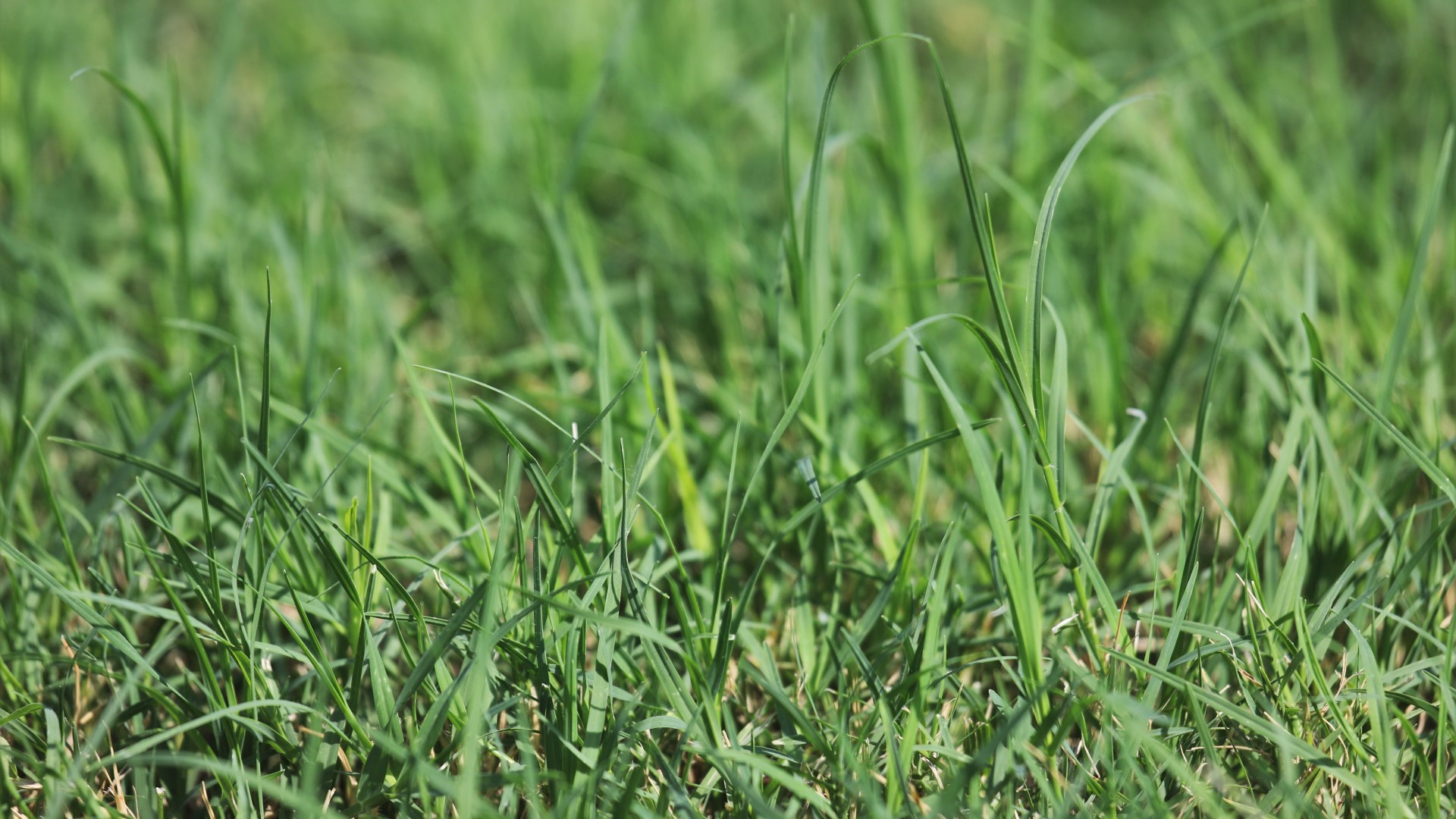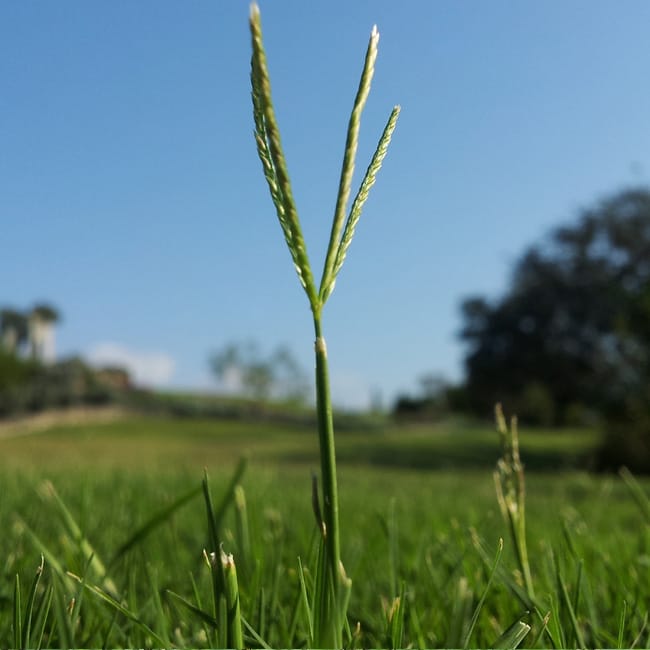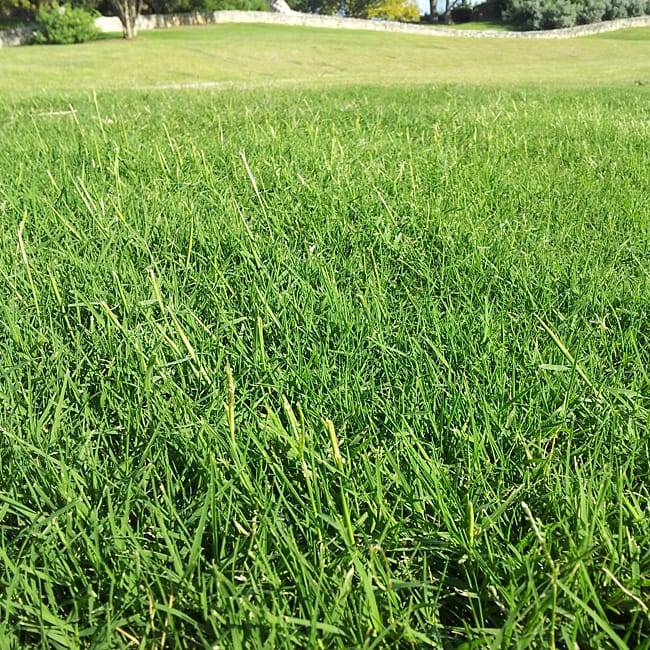


Full sun. An easy turfgrass to grow, Bermuda grass can be established by sod or by seed as long as there’s full sun — at least 8 hours a day. It can go dormant during the scorch of summer, but it has deep roots and revives quickly at the first rain. Mixed with other turf grasses, can fill in sunny areas where more delicate species like St. Augustine may struggle. In fact it’s VERY difficult to eradicate once established, and it tends to creep into flowerbeds and landscaping. New hybrids like Tiff419 and Tiff Sport are sterile, keeping them out of landscape beds; they are only available as sod.
Frequent mowings at very low height are typical for Bermuda: 1-2″ depending on variety. It stops growing in winter (so you can turn down the water from November to March, until the soil warms up again.) Without sufficient water it also goes brown in August, but it revives with the first good downpour. It requires bright sun; if it declines in shade, it needs more sun (not more water) — take this as a chance to convert to watersaver landscaping and shade groundcovers.